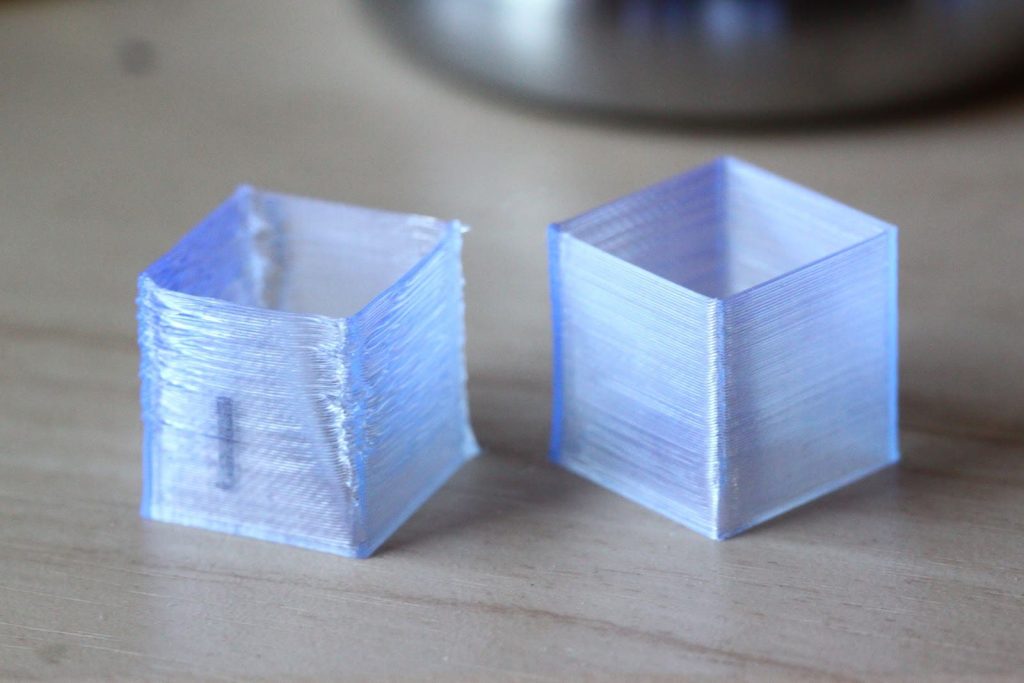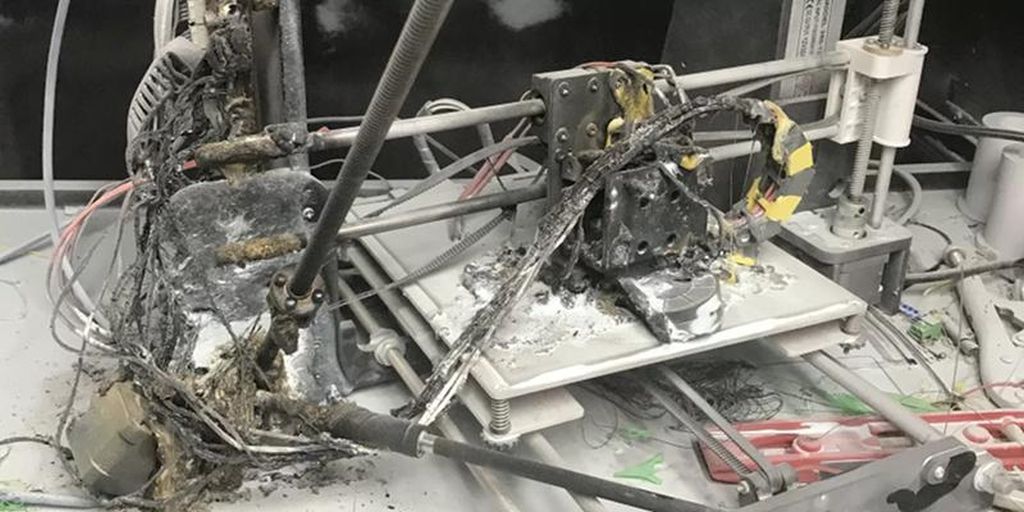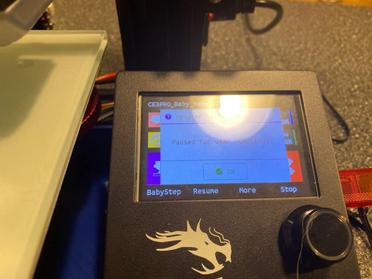When I began using a 3D printer, I wondered how long it could run safely. Most printers can handle long hours, even days, if cared for properly. With the right setup, printing big or detailed projects becomes easy.
how long can a 3d printer run ( short answer)
A 3D printer can work for hours or days, based on its quality and care. Keep it clean and cool for long use. Regularly check for overheating or issues to ensure safe and smooth printing.
In this article we will discuss how long can a 3d printer run.
How Long Can a 3D Printer Run?
A 3D printer can run for hours or even days, depending on its quality and care. High-quality printers with good cooling systems are better for long prints. Regular cleaning, proper lubrication, and checking parts help avoid problems like overheating or wear.
Always ensure enough filament is loaded and monitor the printer during use. For very long prints, you can split projects into smaller parts. With proper maintenance and attention, your 3D printer can handle long printing jobs without issues.
What are the Common Causes of 3D Printer Breakdowns? – Fix Printer Issues!

Common causes of 3D printer breakdowns include:
- Clogged Nozzles: Over time, filaments can build up and clog the nozzle, causing poor print quality or failure.
- Worn-out Parts: Parts like belts, motors, and extruders can wear out with frequent use, leading to mechanical issues.
- Electrical Failures: Problems with wiring or power supply can cause sudden shutdowns or malfunctions.
- Overheating: Printers can overheat if cooling systems are inadequate, causing thermal damage.
- Improper Calibration: Incorrect bed leveling or alignment can lead to printing errors and part misplacement.
Regular maintenance and monitoring help prevent these issues and keep your 3D printer running smoothly.
Is It Safe to Leave a 3D Printer Running – Prioritize Safe Use!

It can be safe to leave a 3D printer running, but you need to take precautions. Make sure the printer is in good condition, placed in a well-ventilated area, and free from flammable objects nearby. Use a printer with safety features like thermal protection.
Monitor your print remotely if possible, and avoid running it overnight or when you’re far away. While most printers are safe, careful use helps prevent overheating or accidents during long printing sessions. Always prioritize safety first.
How Much Power Does a 3D Printer Consume? – Power Up Creativity!
A 3D printer usually uses 50 to 250 watts of power, depending on its size and type. Smaller printers consume less, while larger or industrial models use more. Heating the nozzle and bed takes most of the energy. Printing with lower temperatures or turning off the heated bed after the first layers can save power. To estimate costs, check your printer’s wattage and your electricity rates. 3D printing is generally energy-efficient for creating small to medium-sized projects.
Maximizing Your 3D Printer’s Lifespan – Upgrade Your Prints!

The lifespan of a 3D printer depends on:
- Regular Maintenance: Clean your printer after each use and inspect parts like belts and nozzles.
Lubricate moving components to ensure smooth operation. - Proper Cooling: Keep the printer in a well-ventilated area to prevent overheating.
This helps maintain optimal performance during long prints. - Quality Filaments: Use high-quality filaments to avoid clogs and printing issues.
Monitor your prints regularly to catch potential failures early. - Firmware Updates: Keep your printer’s firmware up to date.
Inspect electrical connections for safety and longevity.
What are the Signs Your 3D Printer Needs Replacement? – Boost Print Quality!
Even with good care, 3D printers can wear out over time and may need to be replaced. Here are some simple signs to look out for:
- Frequent Print Failures: If prints constantly fail due to layer shifting, warping, or other issues despite troubleshooting, it could indicate aging components.
- Declining Print Quality: A noticeable drop in quality, like rough edges or uneven layers, might mean your printer is worn out.
- Unusual Noises: Loud grinding, squeaking, or clicking sounds suggest worn-out motors, belts, or bearings.
- Incompatible Technology: If your printer can’t support newer features or filaments, upgrading to a modern model might be necessary.
- Expensive Repairs: When the cost of fixing parts exceeds the value of the printer, replacement is often a better option.
- Slow Performance: If your printer takes longer to complete tasks than it used to, it may be losing efficiency.
- Limited Spare Parts: Older printers might have scarce replacement parts, making repairs difficult or impossible.
If your 3D printer shows multiple signs on this list, it’s likely time to invest in a new one. A newer model will offer better reliability, advanced features, and improved performance.
Read Also: 3d printer bulging corners – Enhance Print Quality!
Is It Safe to Pause a 3D Print Overnight?

Pausing a 3D print overnight can be safe, but there are a few things to consider. Make sure your printer is in a stable, safe environment to avoid accidents. If you pause the print, check the temperature settings, as some parts like the heated bed may cool down and cause print issues when resumed. It’s also important to use good-quality filament and regularly monitor your printer. If possible, try to avoid long pauses to prevent print failure or misalignment.
How Can You Safely Operate Your 3D Printer for Extended Periods?
To safely use your 3D printer for long periods, follow these tips:
- Monitor the Print: Use a webcam or monitoring app to keep an eye on your print remotely. This helps you catch issues early.
- Check the Filament: Ensure enough filament is available for the entire print. Using a filament runout sensor can help avoid interruptions.
- Take Breaks: If your printer lacks advanced cooling or is older, consider giving it breaks between prints to cool down and prevent damage.
- Inspect Before Printing: Check all components, like belts, nozzles, and fans, before starting a long print. This reduces the risk of failures.
- Split Large Projects: For very large prints, splitting the design into smaller sections can make the process easier and safer.
Read Also: 3d Printer Blobs On First Layer – The Guide Of 2024!
Frequently Asked Questions
1. Can I upgrade my 3D printer?
Many 3D printers can be upgraded with better extruders, improved cooling systems, or larger print beds. Upgrading components can enhance performance and print quality. Always check the compatibility of upgrades with your specific model.
2. How do I monitor my 3D print remotely?
You can use a webcam or a dedicated 3D printing monitoring system to watch prints remotely. Some printers have built-in Wi-Fi or cloud connectivity for easy remote monitoring. This helps you catch issues early without needing to be physically present.
3. How do I troubleshoot a 3D printer that’s printing poorly?
Check for common issues like incorrect temperature settings, a clogged nozzle, or uneven bed leveling. Ensure the filament is feeding properly, and adjust print speeds if necessary. Try different filament if issues persist.
4. How do I prevent my 3D print from warping?
To prevent warping, ensure the print bed is heated to the right temperature, and use a stable printing surface. Slower cooling and using a heated chamber can also help. Try printing with adhesion aids like a raft or brim.
5. Can 3D printers print large objects?
Yes, 3D printers can print large objects, but they must have a sufficiently large build volume. For very large prints, splitting the object into smaller parts is often the best solution. Ensure the printer’s components can handle the size.
6. How do I calibrate my 3D printer?
Calibrating involves leveling the print bed, adjusting the extruder height, and ensuring the nozzle temperature is set correctly. Follow your printer’s manual for specific calibration instructions. Regular calibration ensures better print quality and accuracy.
7. Why is my 3D print not sticking to the bed?
Print bed adhesion issues are often caused by incorrect bed leveling, a dirty bed, or incorrect print settings. Ensure your bed is clean, level, and heated properly. Adjust the print temperature and use adhesion aids like tape or glue.
8. Can I use any filament for 3D printing?
While many filaments are available, it’s important to choose the right one for your printer model. PLA, ABS, and PETG are commonly used. Always check your printer’s specifications to ensure compatibility with the filament type.
9. Are 3D printers costly to run?
3D printers are generally not costly to run, especially for small to medium-sized prints. The main costs come from electricity and filament, which can add up depending on print size and material used. Using energy-efficient settings and quality filament can help reduce costs.
10. How do I fix a clogged 3D printer nozzle?
To fix a clogged nozzle, heat it to the recommended temperature and manually extrude filament to clear the blockage. If that doesn’t work, use a needle or cleaning filament to clear the nozzle. Regular maintenance prevents future clogs.
Conclusion
3D printers are powerful tools that require regular maintenance for optimal performance. By following safety guidelines, monitoring prints, and using quality materials, you can improve the lifespan of your printer. Staying proactive about repairs and upgrades helps prevent issues. With proper care, your 3D printer will deliver great results for a long time.
Read More:
